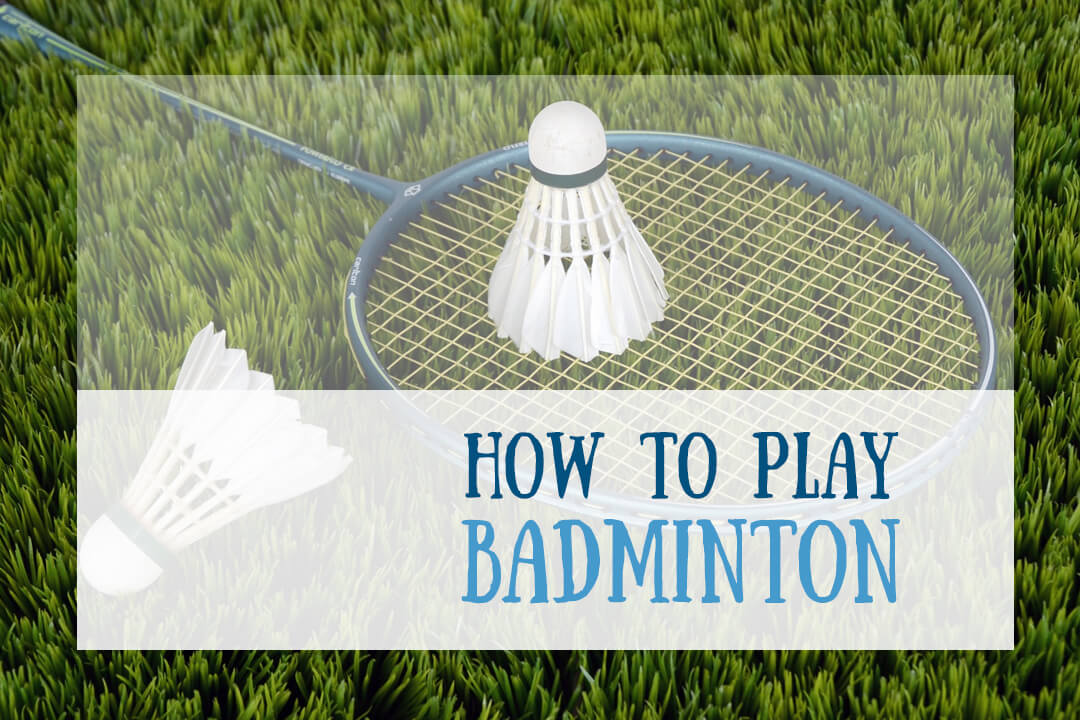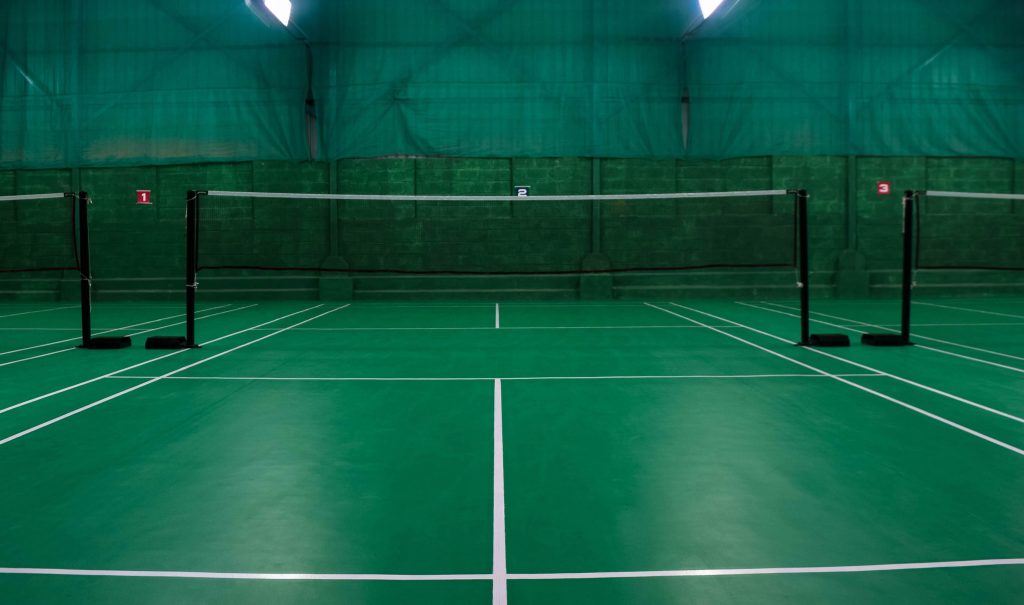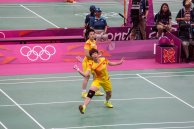
The Badminton is a sport that is not so popular in most of the world, although there are many people who know it, especially for being played with a pen (called a flyer), but consider a variant of tennis and not a sport or do not know that It’s called Badminton. This post is all about the history of badminton and how to play badminton.
History of Badminton
The Badminton we know today was developed in the mid-nineteenth century by the British, but the act of playing with a racquet and a penalty already exists hundreds of years ago, especially in Europe and Asia.
Many are associated with being an evolution of the game “battledore”.
A set of countries (England, Scotland, Wales, Canada, Denmark, France, Ireland, Holland and New Zealand) united and created the International Badminton Federation, making this sport stronger and more regulated, which helped its expansion.
At present, the Badminton is an Olympic modality with a great notoriety, which normally dominates Asian countries, such as China, India, Malaysia or South Korea, and now China has stood out and dominated, masculine, as in the feminine ones.

How to Play Badminton game
The badminton game that can be played both individually and in doubles, consists of 3 games, being a game of the best of three (who first wins two games wins).
The objective is to reach 21 points first then the opponent in the game, having to have a difference of 2 points between them to finish the game. If the game reaches 29 × 29, then whoever scores the first point 30 wins.
The game begins with the referee to make the coin in the air to give a choice between field or service to the winner.
Service
The service must be done in the service area (see below in the image of the Badminton court), and if your number of points is even, you have to do the right side, if it is odd, you have to do it to the left.
The service must always be done diagonally (if you serve in the right service area, you have to send to the right area of your opponent), so if you fall outside that area, your opponent wins the point.
Normally the services alternate between two types: long and short.
Short service
Position your left foot in front (if you are shattered), and in the movement of swinging the racquet, do fast and slow down just when it is almost to serve to confuse the opponent.
Long service
Doing the same as in the short in positioning, and in the movement of the racket should make a strong and quick throw like a whip and being tall and wide towards the bottom of the opponent’s field, taking care that it does not fall out.
Block of Badminton

The badminton court varies in dimensions according to the number of players (individual or pairs), measuring 13.4 meters in length and 5.18 meters in width if it is singular, and 6.10 meters if it is in doubles.
The field is divided in two by a net, being made with a thin rope and having a white canvas of 7.5 centimeters wide in the upper part in all its length, measuring 76 centimeters and being about 1.55 meters from the ground.
The outer lines on the sides mark the width of the field of pairs and the inner lines mark for individuals. At the bottom of the field has a slightly shorter line, this marks the limit of the field of pairs when the service is done (after the opposing team returns its service, the field returns to the normal length).
You can also see in the following image, that the 1.98m of the network is a line that marks the beginning of the service area. This service area corresponds to the area that you have to do the service, and in which the service must fall (if you do a short service and the steering wheel falls in the area before the service area you lose the game and the opponent wins a point ).
Team
Penalty / Steering Wheel / Badminton Shuttlecocks
It should be made of goose feathers, 16 of them (if it is not official or in newer steps you can also find them in plastic, which lasts much longer), weighing between 4.7 to 5.5 grams.
Its base is made of cork or polyurethane and has a lead in the center to maintain its direction.
As they are light and fragile, especially those of feathers, in an official game they are used between 7 and 10 Shuttlecocks and can reach speeds close to or even above 300 km/hour.
Badminton racket
The badminton racket is usually made of tough but lightweight materials such as carbon fiber or titanium, thinking around 100 grams. Its maximum measure is 68 centimeters in length and is made up of interlaced ropes in vertical and horizontal. These badminton rackets can support from 7 to 11 kilos of strength.
Judges
The badminton game has about 12 judges (it is true, a field so small and so many people to see), being separated by functions:
Referee: This is aided by the other judges and is the one with the final word regarding decisions regarding compliance with the rules during the game.
Line Judge: In a game 10 line judges are present, being responsible for seeing if the shuttlecocks fall outside the boundary of the field and also to notify the general referee of any infraction in the rules.
Service Judge: The service judge has the sole purpose of observing the moment of service to see if it is executed correctly and if all the rules are followed by both players.
Basic game rules
Take off: The game begins at the moment one of the players moves from the right to the diagonally opposite. This rule applies to all even points. In the case of the odd ones, the players will draw and receive in their left boxes. After the serve, the ball can go to any sector of the opponent’s court. The player must hit the steering wheel below the waist. In the case of doubles, only the receiver can touch it.
Scoring system: All the modalities are disputed to 3 sets of 21 points each. In the case of a tie at 20 points, the game continues until reaching two points of difference. (Example: 26-24). If the game is prolonged, the first one that reaches 30 wins.
Click here to know more about the rules set Badminton Worlds Federation
Who wins the point?
In the exchange of hits between server and receiver, the player who does not commit a foul will win. Remember that it is missing if: The steering wheel receives two hits in a row by the same player The steering wheel touches the ground The steering wheel does not pass the netThe steering wheel falls off the track or touches the roof (the matches are played on the indoor track).
Measures track
The track is the place where the game develops. The dimensions of the field are 13.40 m. by 5.18 m. of width in individual and of 13.40 m. of length by 6.10 m. wide for doubles. The lines are four centimeters wide. The individual field is delimited by the interior sidelines and the bottom line; that of doubles by the outer lateral lines and the one of the bottom.
Essential materials: racket, steering wheel and shoes
In badminton, there is an essential element that is the racket, in which they face, as, for example, in tennis, or two players (singles) or four (doubles). With the racket, which weighs between 70 and 100 grams in high competition and is composed of carbon fiber, the steering wheel is struck, a cone-shaped object whose tip has a hemisphere that is surrounded by 16 pens, which have the purpose of making the steering wheel go slower. Its weight ranges between 4.74 and 5.50 grams. It must never touch the ground. It can reach 400 kilometers per hour, more speed than an F1.
Here at Sporty Review, we have gathered the best badminton rackets list, Click here to read it.
This would be the equivalent of the ball in tennis. The purpose is to throw it into the opponent’s field. For this, the track is divided by a network (1.55 meters high). In reference to the footwear that is used, it is very light. They have a rubber sole, or other similar material, whose grip capacity is very high.
We also have one article regarding the best badminton shoes available in the market right now. You may also check this out.



